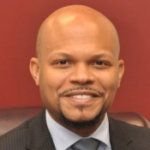Neither test scores nor grades have dominated the conversations that District Administration has had with superintendents and principals about the biggest education challenges in 2023.

Rather, leaders are focusing on issues such as mental health and staff shortages that stand in the way of student achievement.
“As a result of having few resources and the lowest-paid professional staff in the county, our students have not performed to their academic potential and some even suffer from self-esteem issues,” says Stephen Rodriguez, superintendent of the Pottstown School District in Pennsylvania.
Leaders are also priming their teams to tackle issues from inadequate funding to technology. Here’s a rundown of the top seven education challenges:
Beating the biggest education challenges
1. Supporting mental health and student safety
A concerning number of students experimenting with recreational drugs and others bringing weapons to schools are two signs of how the national youth mental health crisis is playing out in the Ankeny Community School District north of Des Monies, Iowa, Superintendent Erick Pruitt says.

In response, Pruitt and his team are working to ensure students are involved in the arts, athletics or other extracurricular activities. The district is trying to educate parents about the mental health resources available at school and in the community. He is also looking at how to better utilize data around students who need more support.
“We also want to ensure parents are aware of how to keep kids safe at home and at school,” Pruitt continues. “We see what’s happening around us, and we want to make sure our facilities and classrooms are safe, and that our staff have the resources they need to react when issues arise. “
Bridgeton Public Schools in New Jersey now screens every student multiple times a year to track their social-emotional health as proficient, an emerging concern or at risk, Superintendent Keith Miles says. Teachers in Bridgeton have infused SEL lessons across all grades in health, physical education and social studies.
“While we provide all students SEL lessons across all grades, we have additional school counselors, SEL specialists, crisis counselors and clinical practitioners on hand to follow up with at-risk students with more frequent individual and group therapy sessions,” says Miles, who has reached a deal to become superintendent of School District of Lancaster in Pennsylvania this summer.
2. Tackling teacher shortages

The shortage of classroom teachers and aspiring leaders is like nothing that Principal Melissa Shindel has ever seen. “We had never started school year without a full staff,” says Shindel, principal of Glenwood Middle School in Maryland’s Howard County Public School System. “This is the second year in a row that’s happened. We’ll be in a real crisis if we can’t figure out how to better grows kids in college and attract them to this field.”
A colleague of Shindel described the situation as “emotional whiplash.” The same teachers who were hailed as heroes during remote learning in the darkest days of the pandemic are now being villainized over curriculum and other issues.
In Pottstown, Rodriguez says the “competition is fierce.” His district fills positions but often loses teachers to more affluent districts. His district has been forced to increase class sizes and “put other teachers on permanent overload schedules.”
“We have had multiple positions open throughout the entire school year, and some buildings have not been fully staffed,” Rodriguez says. “Our teachers who show up every day for students end up getting almost no break because they are covering classrooms that have no teachers.”
Bridgeton Public Schools has experienced unprecedented shortages in math, science, special education and bilingual instruction, Miles says. Teachers and support staff have had to fill vacancies while the district has contracted with a company that provides virtual teachers who can supplement the instruction provided by substitutes. “We have targeted students in courses with substitute teachers with one-to-one in-person and virtual tutors,” Miles says.
3. Sustaining success
The Pottstown School District has been a “highly underfunded entity for several decades,” Rodriguez says. As the community’s tax base has slipped, the district has struggled to pay competitive salaries to teachers, particularly in special education.
More from DA: Ex-Broward schools superintendent is cleared of perjury charge from Parkland probe
The district’s No. 1 education challenge? Support in achieving financial security for the future. “Our biggest concern is in sustaining the excellent growth we started this year,” Rodriguez explains. “With more resources, we have been able to make a real difference for students and the community. Parents and other communities have noticed, but being able to continue on this path will require appropriate and fair funding, which is still a question mark for future years.”
Among the biggest education challenges for a high-performing like Ankeny is driving student achievement higher, says Pruitt. Some 85% of the district’s students are proficient in English and about 70% have hit the mark in math. “We’re asking what is our compelling ‘why’ around how we push for continuous improvement,” Pruitt says. “What’s our message moving forward in a district that does so well in serving kids from multiple backgrounds?”
4. COVID relief crunch
Sustaining success will be further complicated by the looming ESSER deadline that will put pressure on district leaders to make shrewd spending decisions, says Carl Dolente, superintendent of the Cumberland Regional School District in New Jersey.
“Many of the programs, positions, and technology will be hanging in the balance,” Dolente points out. “Trying to find ways to sustain these important and much-needed improvements we were able to make over the past three years will take a great deal of creative budgeting and resourcefulness.”
5. Holding assessments accountable

Superintendent Dana Bedden of the Centennial School District near Philadelphia urged Congress to change the current punitive nature of standardized testing and state accountability systems during a recent 100 Superintendent March to Congress (where he was accompanied by District Administration). “Let’s make the system about spotlighting opportunities rather than a hammer for punishment,” Bedden said.
Today’s school accountability systems are used “as a hammer against districts,” added Karla Loría, superintendent of the Adams 14 School District near Denver, during U.S. Capitol visit. she noted that most assessments do not account for the experiences of the whole student, such as race, background, poverty levels, disability and mobility, English-language learning and trauma.

Loría pointed out that every school and district monitored under Colorado’s accountability system is rural, poor or has high populations of English learners. She added that her district is trying to “change the narrative” by testing multilingual learners in their native languages and in English. And these students are showing growth. “Our system fails to serve the whole child,” Loría said.
6. Updating aging buildings

Outdated facilities have a direct impact on the quality of the education schools districts can provide, particularly when it comes to preparing students for their futures in higher education and the workforce, says Miles at Bridgeton Public Schools
Miles listed maintaining aging facilities and developing new buildings to accommodate population growth, particularly in grades 6-12, as his biggest education challenges.
New Jersey’s School Development Authority is currently helping the district plan a new middle school and is also providing funds for a high school expansion that includes a new gym, a three-story classroom addition, a bigger cafeteria, and additional parking and office space.
7. Distracting devices
During lockdown and remote learning, students’ mobile devices provided a critical connection to the outside world. Post-pandemic, those digital lifelines have become a major learning obstacle, says Dolente of the Cumberland Regional School District.
“Cellphones have become a major distraction in classrooms,” Dolente notes. “We are currently exploring creative ways to detach our students from their personal devices, which they were conditioned to utilize as their only means of communication, education and entertainment for almost two years.”









